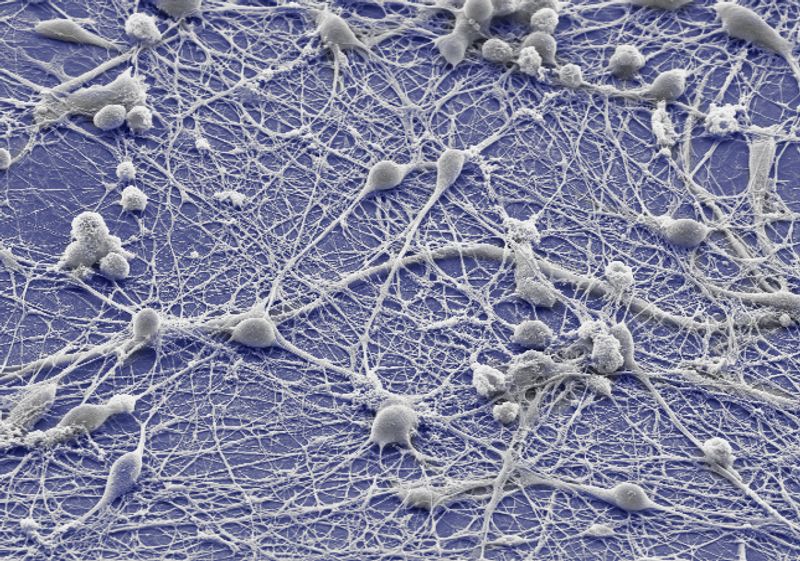Graphene and light help neurons mature in 2D and 3D cell cultures.
Image credit:Elena Molokanova
By using light to stimulate neurons, scientists can gain spatiotemporal control over neural activity. But neurons naturally respond to electrical signal—not light—so researchers typically manipulate them either genetically or structurally.
Concerned about the effects of these changes, biophysicist Elena Molokanova and her team sought a more natural way to stimulate neurons in cell culture. In a recent study, the researchers grew neurons on a coverslip coated with graphene, a thin layer of carbon atoms, and showed that these cells acquired sensitivity to light.1 They also found that graphene could promote the maturation of neurons in 3D human brain organoids with no noticeable signs of toxicities. Their findings, published in Nature Communications, offer a minimally invasive way to generate light-sensitive neurons.
Graphene has the unique capacity to turn light into electrical signal. When graphene absorbs a light particle, or photon, it generates multiple high-energy electrons, which then quickly scatter. Molokanova wondered if she could use the electrons that graphene produced via light stimulation to generate action potentials in neurons. She and her team developed a platform, called Graphene-Mediated Optical Stimulation (GraMOS), that uses graphene and two light sources: one that stimulates neurons through graphene, and another that excites a fluorescent indicator of calcium ions, which signals neural activity.
First, the researchers coated coverslips with graphene that were chemically stabilized and could absorb light better. To demonstrate that graphene could indeed make neurons respond to light, the researchers cultured rat neurons on graphene-coated coverslips and performed patch-clamp experiments with and without light stimulus. They showed that light stimulated ion currents within milliseconds; the current magnitude was proportional to light intensity.
The researchers also measured cell viability, resting membrane potential, and action potential in neurons grown on graphene-coated coverslip and their counterparts cultured on uncoated coverslips. They found that these properties were comparable between the two populations, indicating that graphene didn’t impact the neurons’ health or function.
Alysson Muotri, coauthor of the study, looks at a cell culture dish with four-month-old brain organoids. Each dot on the well represents an individual organoid with approximately five million cells, about half of which are neurons.
Muotri Lab/UC San Diego
Next, Molokanova’s team wanted to know if GraMOS could work in human induced pluripotent stem cell (hiPSC)-derived neurons, so they grew these cells on graphene-coated coverslips for up to six weeks. After validating that these neurons had normal viability and function, the team tested their response to light. They observed that GraMOS could activate nearly 70 percent of hiPSC-derived neurons, although only about 10 percent of these cells were mature enough to be active. This finding motivated them to investigate whether GraMOS could accelerate the maturation of neurons in culture.
To test this, the team introduced graphene flakes during early stages of hiPSC-derived organoid generation. They let the organoids grow for up to four months, exposed them to light at set intervals for two weeks, then monitored their activity for three weeks. The researchers validated that graphene didn’t alter the cultured cells’ viability or neural activity. Then, they showed that the light-trained organoids were more active, connected, and synchronized—these are key parameters of nerve cell maturation. Using bulk-RNA sequencing, the researchers also found significant upregulation in the expression of genes that are involved in neuronal development and differentiation as well as synaptic signaling and transduction.
GraMOS offers a less invasive approach to generating light-responsive neurons. The platform may also allow researchers to develop more representative models of age-related, neurodegenerative diseases, as it promotes the maturation of nerve cells in culture, which is often hard to achieve in hiPSC-derived neurons.
“Using graphene and light, we were able to nudge the neurons to form connections and mature more rapidly,” Molokanova said in a statement. “It’s like giving them a gentle push to grow up faster, [which is] essential for studying age-related diseases in a dish.”




